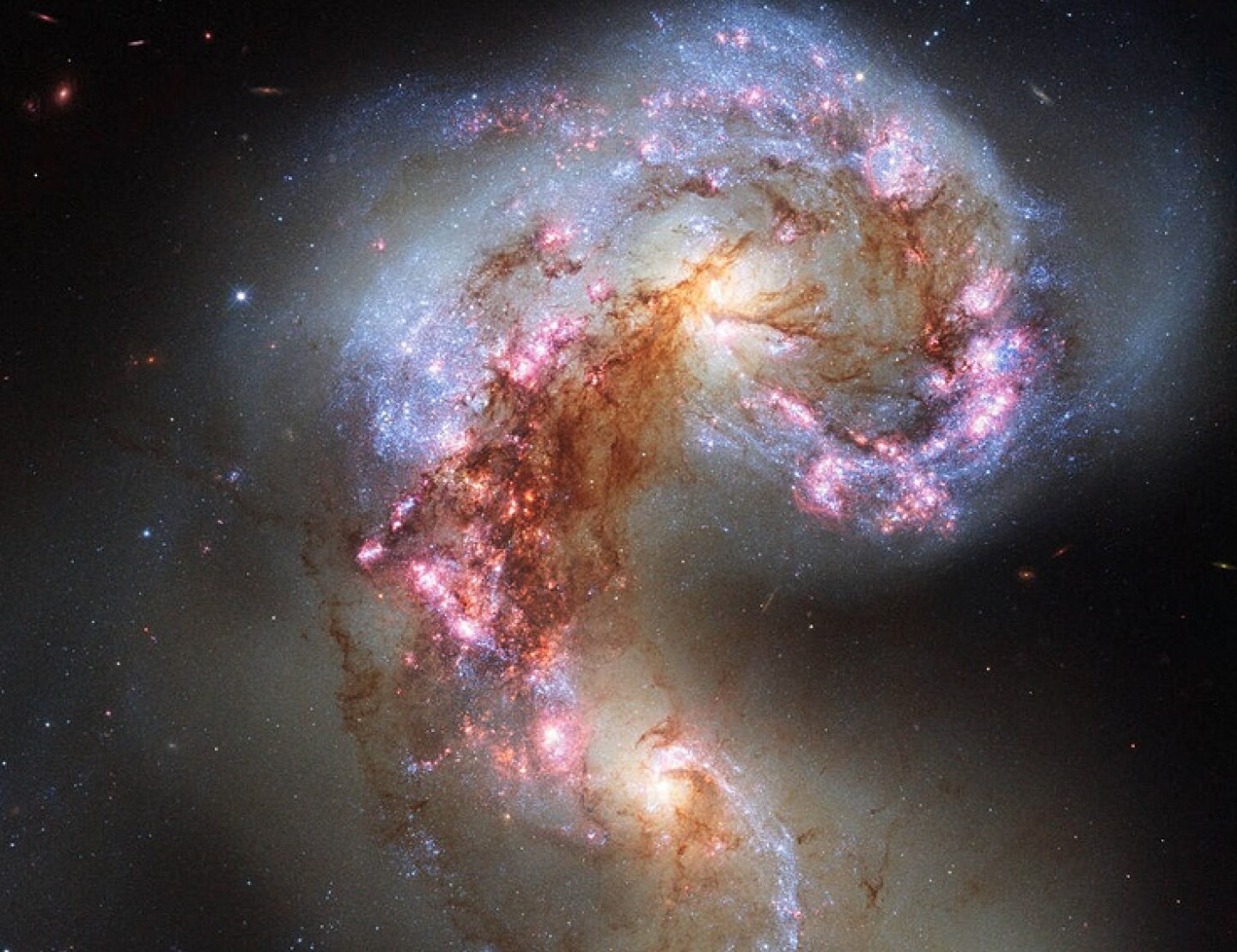Telescopio Hubble cumple 30 años en órbita
Fue lanzado al espacio el 24 de abril de 1990; con él se inauguró el programa de Grandes Observatorios

The NASA/ESA Hubble Space Telescope has snapped the best ever image of the Antennae Galaxies. Hubble has released images of these stunning galaxies twice before, once using observations from its Wide Field and Planetary Camera 2 (WFPC2) in 1997, and again in 2006 from the Advanced Camera for Surveys (ACS). Each of Hubble’s images of the Antennae Galaxies has been better than the last, due to upgrades made during the famous servicing missions, the last of which took place in 2009. The galaxies — also known as NGC 4038 and NGC 4039 — are locked in a deadly embrace. Once normal, sedate spiral galaxies like the Milky Way, the pair have spent the past few hundred million years sparring with one another. This clash is so violent that stars have been ripped from their host galaxies to form a streaming arc between the two. In wide-field images of the pair the reason for their name becomes clear — far-flung stars and streamers of gas stretch out into space, creating long tidal tails reminiscent of antennae. This new image of the Antennae Galaxies shows obvious signs of chaos. Clouds of gas are seen in bright pink and red, surrounding the bright flashes of blue star-forming regions — some of which are partially obscured by dark patches of dust. The rate of star formation is so high that the Antennae Galaxies are said to be in a state of starburst, a period in which all of the gas within the galaxies is being used to form stars. This cannot last forever and neither can the separate galaxies; eventually the nuclei will coalesce, and the galaxies will begin their retirement together as one large elliptical galaxy. This image uses visible and near-infrared observations from Hubble’s Wide Field Camera 3 (WFC3), along with some of the previously-released observations from Hubble’s Advanced Camera for Surveys (ACS).
/ESA/Hubble & NASA
Inició como un proyecto de la Agencia Espacial Estadunidense (NASA) y la Agencia Espacial Europea que, con el paso del tiempo, revolucionó la astronomía y permitió hacer descubrimientos que telescopios terrestres jamás hubieran logrado.
Hablamos del Telescopio Espacial Hubble (HST), el cual orbita a 593 kilómetros sobre el nivel del mar. Su recorrido alrededor del planeta ha permitido la captura de imágenes del universo que son altamente valoradas por los especialistas.
Alan Watson, investigador del Instituto de Astronomía de la UNAM, declaró que tales imágenes han “estimulado el interés de la población” por este campo de la ciencia.
Mientras que Antonio Castellanos, investigador posdoctoral de la UNAM, externó que gracias al HST se pueden conocer datos que generan conocimientos científicos.
Wattson fue uno de los especialistas que participaron en la instrumentación del telescopio y Castellanos conoció información “inédita” sobre este instrumento cuando realizó el doctorado en el Instituto de Ciencias Nucleares (ICN) de la UNAM.
“El telescopio espacial Hubble es el más famoso que hay y es mucha la competencia internacional para solicitar tiempo de observación”, precisó Castellanos, quien resaltó que “no es tan sencillo obtener datos y los nuestros los obtuvimos en 2014”.
Este instrumento recibió su nombre en honor del astrónomo estadounidense Edwin Hubble, uno de los más destacados en el siglo XX. Mañana se cumplen 30 años de su lanzamiento al espacio. GA
ES DE INTERÉS:





